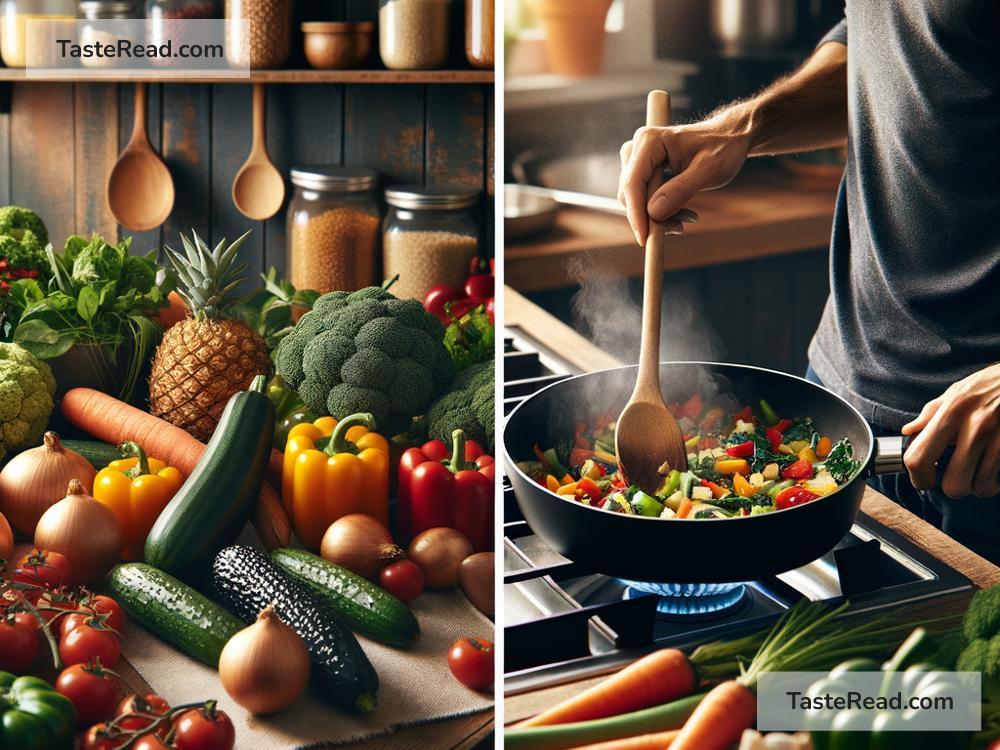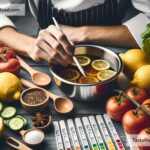How Cooking Affects Antioxidant Levels in Foods: The Simple Truth
Antioxidants are tiny but powerful compounds found in food that help shield our bodies from harmful molecules called free radicals. Free radicals can damage cells and lead to problems like aging and illness, so antioxidants are a vital part of a healthy diet. Fruits, vegetables, nuts, and grains are among the best sources of antioxidants. But here’s the catch: what happens to these antioxidants when we cook our food?
Cooking is a necessary and delicious part of preparing meals. It improves taste, softens textures, makes food easier to digest, and removes harmful bacteria. However, cooking also changes the makeup of the food, including its nutrients and antioxidant levels. Depending on how we cook, antioxidant levels in foods can either go up or down. Understanding how cooking affects antioxidants can help us make smarter choices in the kitchen.
What Are Antioxidants, and Why Are They Important?
Antioxidants are chemical compounds that protect our cells from damage caused by free radicals. Free radicals are unstable molecules that can build up in the body due to stress, pollution, smoking, or unhealthy foods. When free radicals overwhelm the body’s defenses, it can lead to something called oxidative stress, which contributes to illnesses like heart disease, cancer, and diabetes. Eating antioxidant-rich foods helps the body fight off these free radicals.
Common antioxidants include vitamins C and E, beta-carotene, flavonoids, and polyphenols. Each type of antioxidant plays a different role in maintaining health, but all of them work toward keeping our cells strong and resilient.
How Cooking Changes Antioxidants in Food
When we cook food, we use heat, water, and sometimes oil or steam. These processes change the chemical structure of the food, which can have both positive and negative effects on antioxidant levels.
The Positive Effects of Cooking
Some antioxidants actually become more available or effective when food is cooked. This happens because heat breaks down tough plant walls, making it easier for our bodies to access the antioxidants inside.
One example of this is lycopene, the antioxidant found in tomatoes. Lycopene is known to help fight cancer and heart disease. Cooking tomatoes, such as boiling them to make pasta sauce, increases the body’s ability to absorb lycopene by releasing it from the tomato’s cell walls. Similarly, cooked carrots can provide more beta-carotene, an antioxidant that supports eye health and the immune system.
Another example is the antioxidant content in spinach. Boiling or steaming spinach can cause some antioxidants to leach into the cooking water, but at the same time, it reduces its oxalate levels. Oxalates are compounds that can block the body from absorbing nutrients, so reducing oxalates actually helps boost antioxidant absorption overall.
The Negative Effects of Cooking
Although cooking can sometimes enhance antioxidants, it can also destroy them, especially at high temperatures. Heat-sensitive antioxidants, like vitamin C, are particularly vulnerable. For example, broccoli is packed with vitamin C and other antioxidants, but boiling it for too long can cause a significant drop in antioxidant levels. Steaming, on the other hand, is gentler and preserves more of its nutrients.
Cooking methods that use high heat, like frying or roasting, can also degrade antioxidants. For example, frying foods in oil might reduce the polyphenols found in foods like eggplants or potatoes. Additionally, frying can increase free radicals in food if the oil and heat are not managed carefully.
Similarly, grilling vegetables or fruits can lead to nutrient loss if the heat is too intense or exposure is prolonged. Instead of grilling, techniques like steaming, microwaving, or baking at moderate temperatures are better for preserving antioxidants.
Cooking Methods to Keep Antioxidants Intact
To get the most antioxidants out of your food, you can choose cooking methods that are gentler. Here are some tips:
-
Steaming: Steaming vegetables is one of the best ways to preserve antioxidants. It uses water in the form of steam, which helps retain nutrients without overexposing food to high temperatures.
-
Microwaving: Microwaving is surprisingly effective at preserving antioxidants because it cooks food quickly, which minimizes nutrient loss.
-
Roasting or Baking: If roasting or baking, use moderate heat to prevent burning and keep antioxidants intact. Adding a sprinkle of olive oil can also enhance the absorption of fat-soluble antioxidants such as carotenoids.
-
Boiling Short-Term: If boiling, keep cooking time short and avoid overboiling. For example, blanching vegetables for a few minutes and then cooling them down can keep their antioxidants.
-
Reuse Cooking Water: If you boil vegetables, consider using the leftover water in soups or sauces since some antioxidants may leak into the water during cooking.
Incorporating Antioxidants into Your Diet
Regardless of your cooking technique, the best way to get enough antioxidants is to eat a wide variety of fruits and vegetables every day. Different foods contain different types of antioxidants, so mixing them up ensures you’re giving your body a broad spectrum of protection.
Cooking can transform food in wonderful ways, making it tastier and easier to digest. But it’s important to balance the benefits of cooking with its potential impact on nutrients and antioxidants. By using cooking methods that preserve or enhance antioxidants, you can keep your meals both delicious and healthy.
So, the next time you’re in the kitchen, think about how your cooking technique impacts your food. Protect those antioxidants—it’s a simple way to support better health while savoring every bite.


